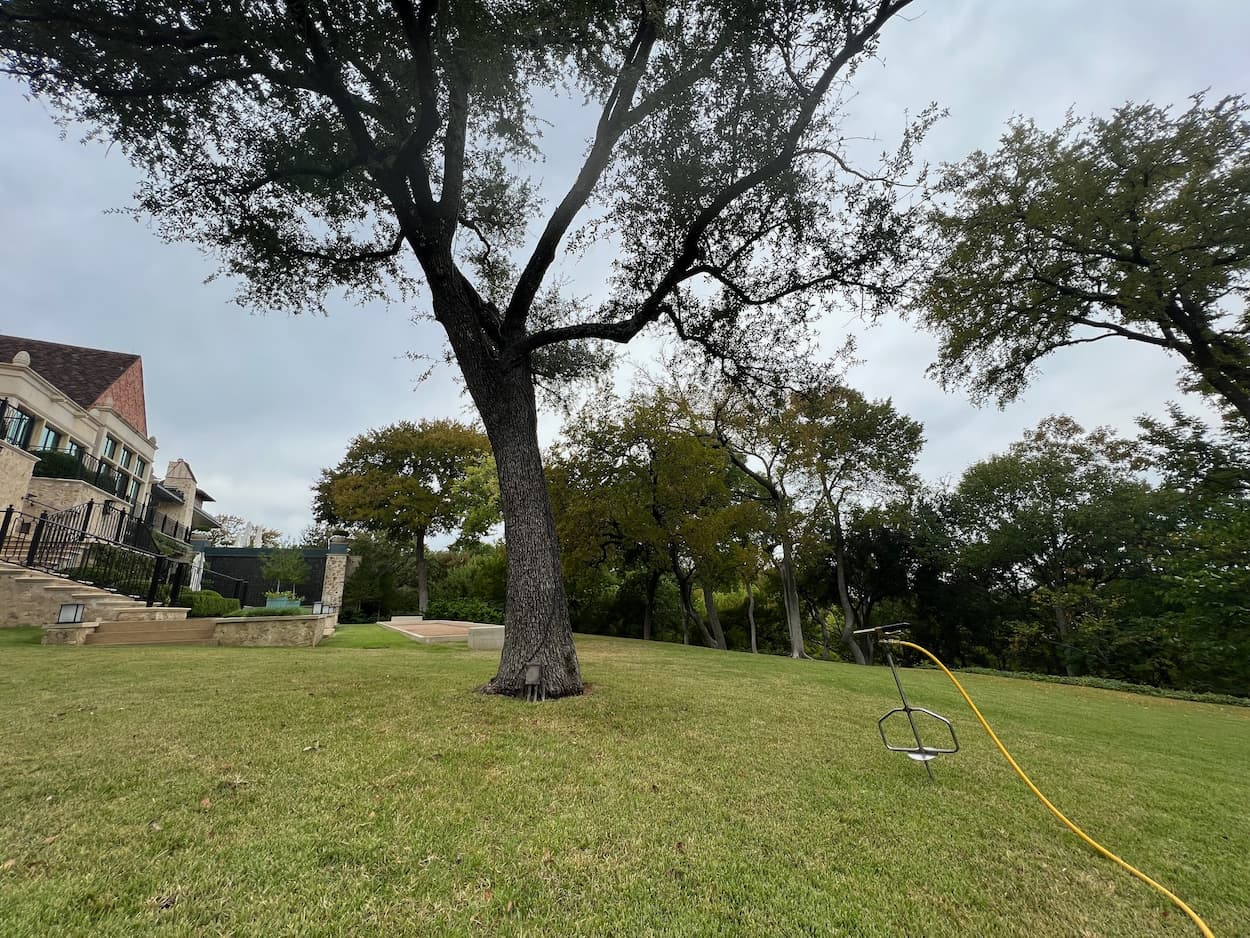Texas Shrubs & Tree Health Care Experts
Caring For Texas Shrubs & Trees Since 1990 Get A Free QuoteCall (817) 880-6130Tree & Shrub Pest Treatment Services in Forest Hill, TX
Our ISA Certified Arborist Can Help Treat Your Trees and Shrubs From Pests in Forest Hill, TX.
Arborist USA provides Tree & Shrub Pest Treatment Services in Forest Hill, Texas, and the surrounding areas.
Forest Hill, Texas, features an idyllic array of trees and shrubs, providing a scenic backdrop to the community’s daily life. However, this picturesque greenery occasionally faces challenges from invasive pests, underlining the importance of comprehensive tree and shrub pest treatments to preserve Forest Hill’s natural beauty.
In conclusion, the task of preserving Forest Hill’s lush greenery against invasive pests requires a well-rounded and proactive approach. Swift and comprehensive tree and shrub pest treatments ensure the sustained health and aesthetic appeal of the town. These efforts, in unison with a commitment to eco-friendly practices, affirm Forest Hill’s dedication towards fostering a green, vibrant, and pest-free environment for its residents.
If you are in need of Tree & Shrub Pest Treatment Services in Forest Hill, TX, please get in touch with Arborist USA today by calling us at (817) 880-6130, your Tree & Shrub Disease Specialist.
Signs of a Sick Tree or Sick Shrub
- Dead Branches
- Yellowing Leaves
- Fungi or Decay
- Bark Falling Off
- Discolored or Rusted Leaves
- Dying Tree or Shrub
- Leaf Discoloration
- Root or Insect Damage
- Leaves look like they’re being eaten
- Bark is Peeling
- Holes in leaves
- Holes on Bark or Branches
- Stunted Growth
- Canopy Dieback
- Bark Abnormalities
- Wilting
Tree & Shrub Helpful Tips
1. Common Pests:
Aphids, beetles, borers, caterpillars, mites, and scale insects often pose serious threats to trees and shrubs in Forest Hill. Immediate recognition and proactive measures can arrest the progression of these pests.
2. Identifying Infestation:
Yellowing or wilting leaves, unusual leaf drop, bark abnormalities, and limited growth are possible signs of pest infestation. Recognizing these symptoms early allows timely initiation of suitable pest control intervention.
3. Urgency of Treatment:
Early detection is crucial in mitigating pest damage. Look for signs like curling leaves, holes in leaves or bark, sawdust at the tree base, discolored foliage, or abnormal growth patterns.
4. Professional Services:
Professional pest treatment services bring unparalleled precision in identifying pests and crafting effectual treatment plans. Persistent surveillance and prompt adaptations enhance the success rate of these treatments.
5. Treatment Approaches:
The choice of pest treatment strategies, ranging from biological and chemical controls to sound horticultural practices and physical removal, is largely determined by the type and scope of the infestation.
6. Preventive Measures:
Preventing pest infestations through regular pruning, suitable watering, and correct fertilizing practices, alongside fostering biodiversity, can minimize the chance of pest attacks.
7. Integrated Pest Management (IPM):
This modern pest control tactic combines multiple techniques for power- packed pest management, whilst minimizing the impact on the surrounding ecosystem, making it aptly suitable for Forest Hill.
8. Balancing Pest Control and Biodiversity:
Effective pest control should not compromise the well-being of beneficial insects and local wildlife. Here, professional pest management services come to the rescue, skillfully balancing these diverse considerations.
9. Community Participation:
The collective effort of residents is critical in early detection of infestations, implementing preventive care and soliciting professional assistance at the right time, driving the overall efficacy of pest control measures.
10. Education and Awareness:
Extensive understanding within the community about potential pests, signs of infestation, and the various methods of control can foster a communal drive towards efficient pest management.
If you’re concerned or have any further questions about our Tree & Shrub Pest Treatment Services in Forest Hill, TX, or surrounding areas in North Texas, please call us at (817) 880-6130.
Tree & Shrub Pests
Listed below are common Tree & Shrub Pests found in Texas.
Aphids
A white soft body insect that creates a sticky "honey dew" structure on limbs or leaves, blocking nutrients.
Bagworms
Bagworms lay eggs that create small cone-shaped structures less than three inches in length.
Beetles
An invasive wood borer that is subject in all wood tissue that causes severe decline in trees health.
Gypsy Moth
A larva that boars into leaf structure that cause lesser of a foliation and decline in overall leaf structure.
Oak Gall
A growth deformity known as a "gall" commonly occur on oak trees subject to branches and other structures.
Termites
Termites, wood-destroying insect, eats away at all wood tissue, damaging the structures of the trees.
Twig Girdlers
Being a member of the long-horned beetle family, these girdlers are known to eat leaf and other tree areas.
Webworms
These caterpillars spin white webbing bag nests in tree branches and eat your tree foliage (leaves).
Certifications




Our Reviews

A+ BBB Rating based on 31 BBB Reviews
4.8/5.0 based on 83 Top Rated Local Reviews
4.6/5.0 based on 36 Facebook Reviews
4.0/5.0 based on 4 Trust Pilot Reviews

4.9/5.0 based on 90 Google Reviews
4.5/5.0 based on 13 Yelp Reviews
29 Recommendations on Nextdoor
Total Reviews: 286 ![]() Real Customer Reviews
Real Customer Reviews







